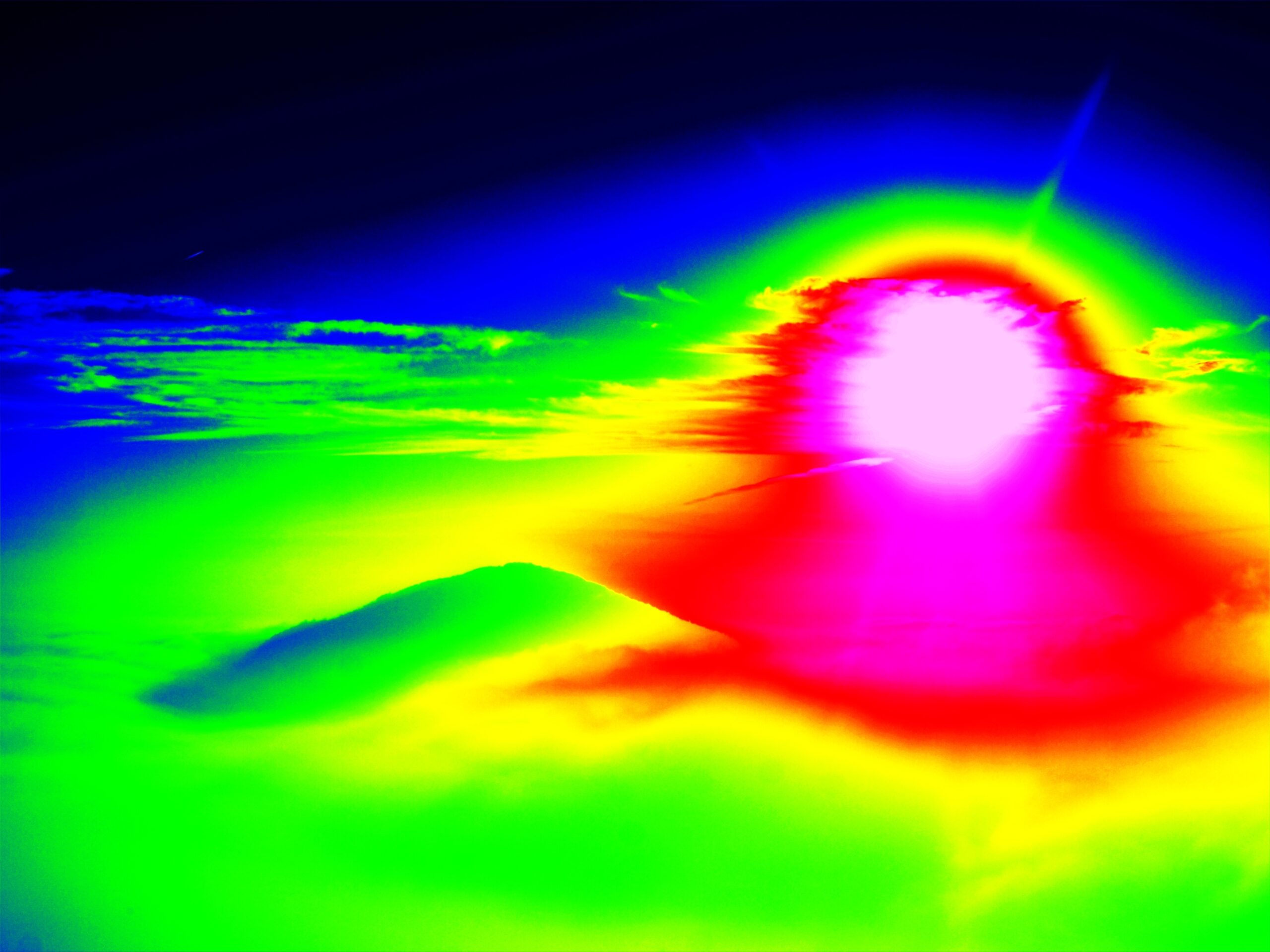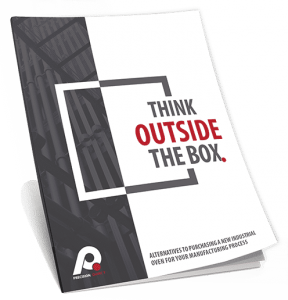
A CRITICAL CONSIDERATION IN OVEN SELECTION. PRODUCT AND PROCESS ARE KEY.
Simple calculations and a little advance planning will help ensure that the oven you specify will do the job in your process.
Cycle Dynamics
Many criteria should be considered when specifying an industrial oven. One of the most critical considerations, however, is cycle dynamics. Evaluate your product and process to determine the appropriate cycle dynamics, including proper oven capacity, setpoint temperature, ramp/soak profile and cool down, if required.
Proper Capacity
Several factors must be considered and calculated to ensure that the oven will have the necessary heating capacity for your specific material during a given time frame:
• Product mass and the mean specific heat of the product.
• Amount of powered exhaust system losses.
• Amount of wall losses.
• Required energy to heat the oven itself.
An example will show how these factors work together to determine required oven capacity.
Assume you are curing hard rubber, which has a mean specific heat of 0.33, in 1,000 lb loads at 350°F (177°C) for 1 hr. Use the following formulas to ensure that the oven will have the proper capacity for the given process.
Formula 1: Product Load
To raise the temperature of the load to 350°F, use the following equation:
Product Weight x [Operating Temperature (°F) – Ambient Air (°F)] x Mean Specific Heat ÷ Cycle Time = BTU/hr
If you insert the numbers from the rubber curing example, you get:
1,000 pounds x [350°F – 70°F] x 0.33 BTU ÷ 1 hr = 92,400 BTU/hr
Formula 2: Powered Exhaust System Losses
Next, assume you need 100 cfm of powered exhaust to comply with NFPA 86 codes and remove the appropriate amount of fumes from the work area. The following equation would be applied:
Exhaust system cfm x [Operating Temperature (°F) – Ambient Air (°F)] x Correction Factor = BTU/hr
If you insert the numbers from the rubber curing example, you get:
100 scfm x [350°F – 70°F] x 1.08 BTU/hr = 30,240 BTU/hr
It is important to note that this formula has been adjusted with a correction factor of 1.52, which relates to the oven’s operating temperature of 350°F and an ambient temperature of 70°F.
Formula 3: Wall Losses
Now, look at the oven under consideration and determine its losses. Assume the oven’s exterior is 277 ft2, has 4″ insulated walls and 4 lb density Rockwool insulation. The total wall losses for 1 hr would be:
Total Square Feet of Oven Exterior x BTU/hr Loss per Square Foot of Oven Exterior = Total BTU/hr Wall Loss
If you insert the numbers from the rubber curing example, you get:
277 ft2 x 70 BTU/hr-ft2 = 19,390 BTU/hr
Putting the Equations Together
Finally, by adding the above totals, you can determine the minimum amount of BTU/hr needed for the application:
Product Load + Exhaust System Losses + Wall Losses = Minimum Total BTU/hr
Inserting the values from the example, you get:
92,400 BTU/hr + 30,240 BTU/hr + 19,390 BTU/hr = 142,030 BTU/hr
If you would rather think in terms of kilowatts, simply divide the total number of BTU/hr — that is, 142,030 — by 3,412 and arrive at the minimum number of kilowatts necessary. In our rubber curing example, the result is 42 kW minimum.
Heatup
Once you have determined that the oven has the appropriate amount of BTU/hr or kW, you need to decide how the setpoint (350°F in our example) should be reached. A desired temperature can be obtained in two ways: One, you can utilize a setpoint controller to obtain the specified temperature as quickly as possible, or two, you can control the rate of increase or decrease with a ramp/soak programmer. The first method of reaching setpoint is the most straightforward. You simply load the product into the oven, turn the unit on, set the temperature and allow the unit to run at full capacity until the setpoint is reached. With this type of control device, the oven and product do not obtain temperature in a linear fashion.
With the second option — a ramp/soak programmer — you can pre-establish multiple setpoints and plateaus. This type of device gives tremendous control over the oven and allows the product to “catch up” before moving on to the next stage of the heating process. This helps to ensure the oven interior area is a precisely controlled environment and that the product is “seeing” the temperature necessary for the time period required.
Soak Times
It is a well-known fact that the recirculating air within an oven will reach the desired temperature faster than the product load. Therefore, soaks can be viewed as a technique that allows the product temperature to catch up to the recirculating air temperature. For example, suppose the oven air reaches 350°F, but the product has reached only 280°F (138°C). A thermocouple attached to the product or placed within the work area can sense the temperature discrepancy and stop the oven from rising in temperature until the product reaches 350°F as well. Once the sensor tells the controller that the product has reached 350°F, the controller starts a timer and holds the oven at 350°F until a pre-designated time has been reached. Ramp and soak programming allows you to establish a coordinated, controlled increase in product temperature as it relates to the recirculated air temperature.
Cool Down
Categorized as the removal of recirculating and residual heat from the oven work area, cool down normally is accomplished by exhausting the hot air and introducing ambient air. If the rate of temperature decline does not need be controlled, then simply opening the fresh air inlet ports and adjustable dampers on the ventilation/exhaust system will suffice. But, if the cool down must be controlled, two basic options are available:
• Manually open the ventilation/exhaust port and fresh air inlet port a proper amount, allowing the heaters to run or the burner to modulate at the appropriate level. This approach controls the rate of decrease and allows for a “soft landing” when reaching lower temperatures.
• Couple a programmer with a modulating damper arrangement on the fresh air inlet and exhaust fan to allow for automatic cool down. With this approach, the programmer automatically senses and manipulates the ventilation/exhaust damper and fresh air inlet damper to achieve the correct mixture of air. The programmer also will control the heater banks or gas burner in coordination with the modulating damper arrangement, ensuring the desired rate of decrease in oven temperature so as to avoid thermal shock.
Keep in mind that when calculating an oven’s capacity, heatup time, soak parameters or cool down segments, much depends on the product configuration, loading pattern as it relates to the selected airflow type, and the way in which the air interacts with the product.


